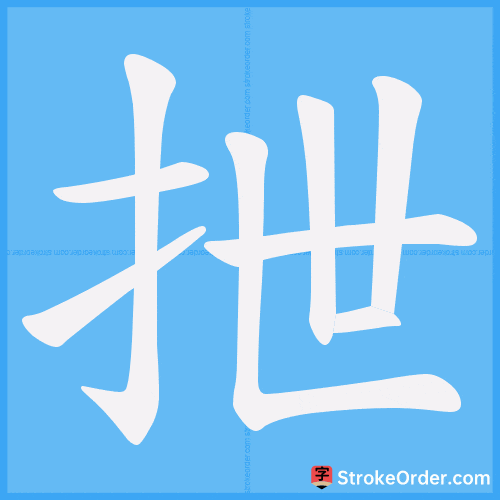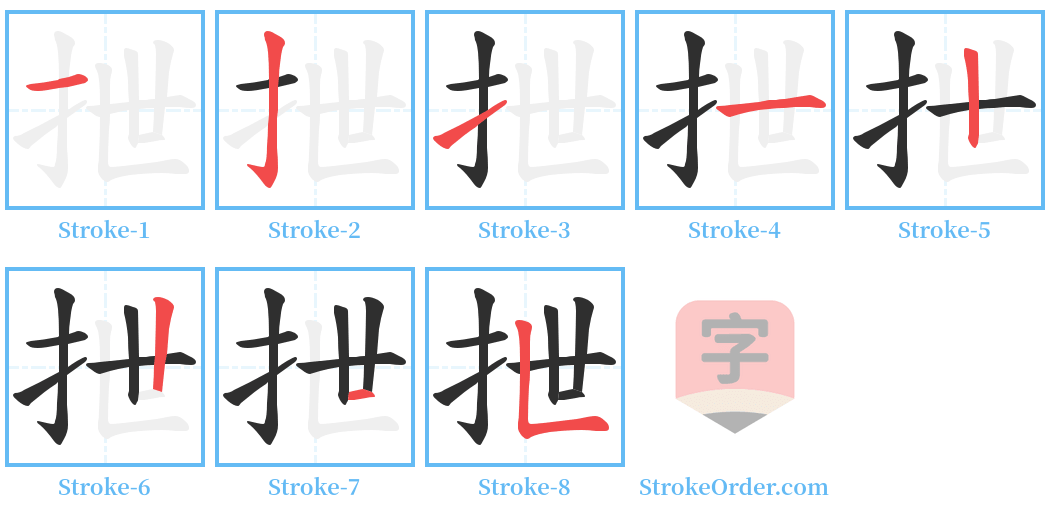抴 Stroke Order
Animated Stroke Order of 抴

Stroke Order Diagrams for 抴

Information of 抴
Pinyin
yè
Radical
扌
Strokes
8 strokes
Usage
★★
Definition
抴 [yè]
1. 同“曳”。
[En.] Same as "曳".
2. 拉;牵引。后作“曳”
[En.] Drag; haul. Later written as "曳".
3. 连缀
[En.] Join together; put together.
引:
1. 抴,搐也。从手,世声。与曳略同。俗作拽。
[En.] "抴" is also read as "搐". It derives from "手" and "世声", and is slightly similar to "曳". Commonly mistaken as "拽".
2. 《荀子·非相》:接人则用抴。 注:“牵引也。”
[En.] "Xunzi - Fei Xiang": To connect with people, use "抴". Note: "It also means to drag/haul".
3. 晋·常璩《华阳国志·蜀志》:大呼抴蛇。
[En.] "Jin Dynasty, Chang Qu, Huayang Guozhi, Shuzhi": Shouting to "抴" the snake.
抴 [yè]
名。通“柂”( yì)。短桨。一说是绑弓的器具
[En.] A noun. Same as "柂" (yì). Short oar. Some say it is an implement used to bind a bow.
引:
1. 《荀子·非相》:接人则用抴。郝懿行曰:“抴即杝字。”
[En.] "Xunzi - Fei Xiang": To connect with people, use "抴". Hao Yixing said: "抴 is the same character as 杝".
2. 《楚辞·湘君》:桂抴兮兰抴。 注:“船旁板也。”
[En.] "Chuci - Xiangjun": "桂抴兮兰抴". Note: "It refers to the planks beside the boat".